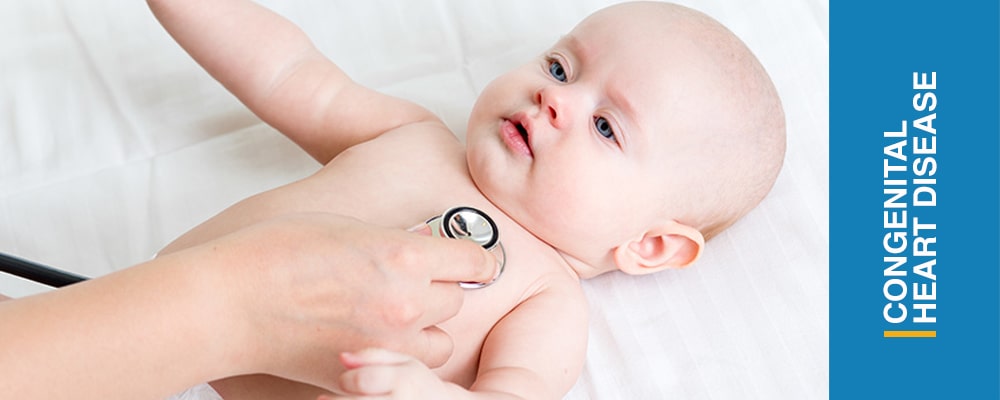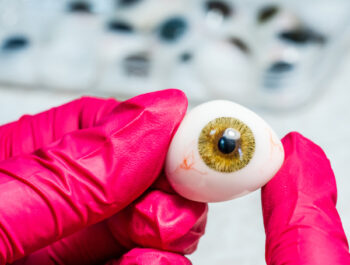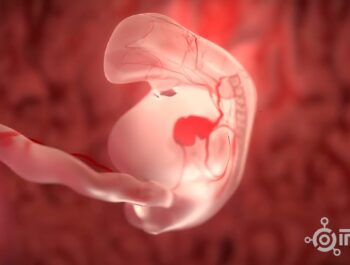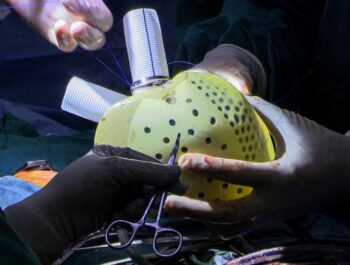
What Is Congenital Heart Defect?
5min ReadSome children have a congenital heart defect, it means that they born with a problem in the structure of their heart. Some of these problems are simple and don’t need treatment, while others are complex and may require several surgeries over several years.
The problem can affect:
- the heart walls
- the heart valves
- the blood vessels
Symptoms
A congenital heart defect is often detected during a pregnancy ultrasound. If your doctor hears an abnormal heartbeat, for instance, they may further investigate the issue by performing certain tests. If a diagnosis is made, your doctor will make sure the appropriate specialists are available during delivery.
The symptoms of these problems may not appear until shortly after birth. Newborns may experience these symptoms:
- bluish lips, skin, fingers, and toes
- breathlessness or trouble breathing
- feeding difficulties
- low birth weight
- chest pain
- delayed growth
But if the symptoms appear several years after birth such as:
- abnormal heart rhythms
- dizziness
- trouble breathing
- fainting
- swelling
- fatigue
Risk factors
Some environmental and genetic risk factors may play a role in developing these problems. They include:
- The heart defect may run in families.
- Taking certain prescription drugs during pregnancy puts a child at a higher risk for a heart defect.
- Using alcohol or illegal drugs during pregnancy can increase a child’s risk of having a heart defect.
- Mothers who had a viral infection during the first trimester of pregnancy are more likely to give birth to a child with a heart defect.
- Increased blood sugar levels, such as occurs with diabetes, may affect childhood development.
Types of congenital heart defect
Holes in the heart
Holes can form in the walls between heart chambers or between major blood vessels leaving the heart.
In certain situations, these holes allow oxygen-poor blood to mix with oxygen-rich blood, resulting in less oxygen being carried to your child’s body. Depending on the size of the hole, this lack of sufficient oxygen can cause your child’s skin or fingernails to appear blue or possibly lead to congestive heart failure.
Obstructed blood flow
When blood vessels or heart valves are narrow because of a heart defect, the heart must work harder to pump blood through them. Eventually, this leads to enlarging of the heart and thickening of the heart muscle.
Abnormal blood vessels
Several congenital heart defects happen when blood vessels going to and from the heart don’t form correctly, or they’re not positioned the way they’re supposed to be. A defect called transposition of the great arteries occurs when the pulmonary artery and the aorta are on the wrong sides of the heart.
A condition called coarctation of the aorta happens when the main blood vessel supplying blood to the body is too narrow. The total anomalous pulmonary venous connection is a defect that occurs when blood vessels from the lungs attach to the wrong area of the heart.
Heart valve abnormalities
If the heart valves can’t open and close correctly, blood can’t flow smoothly. One example is pulmonary atresia, in which the pulmonary valve is missing, causing abnormal blood flow to the lungs.
An underdeveloped heart
Sometimes, a major portion of the heart fails to develop properly. For example, in hypoplastic left heart syndrome, the left side of the heart hasn’t developed enough to effectively pump enough blood to the body.
A combination of defects
Some infants are born with several heart defects. Tetralogy of Fallot (the-TRIAL-uh-jee of fuh-LOW) is a combination of four defects: a hole in the wall between the heart’s ventricles, a narrowed passage between the right ventricle and pulmonary artery, a shift in the connection of the aorta to the heart, and thickened muscle in the right ventricle.
Congenital Heart Disease in Adults
Depending on the defect, diagnosis and treatment may begin shortly after birth, during childhood, or in adulthood. Some defects don’t cause any symptoms until the child becomes an adult, so diagnosis and treatment may be delayed. In these cases, the symptoms of a newly discovered congenital heart defect may include:
- shortness of breath
- chest pain
- a reduced ability to exercise
- being easily fatigued
The treatment can also vary depending on the severity of the heart defect. Some people may only need to monitor their condition closely, and others may require medications and surgeries.
It’s very important to continue visiting your doctor for follow-up care. Treatment may not cure your heart defect but it can help you have an active, productive life. It can also reduce the risk of developing other heart problems such as heart infections, heart failure, and stroke.
Treatment
The doctor suggests different treatments based on the type and severity of the defect. Some babies have defects that they will heal on their own after a while. But other ones may require extensive treatments. They can include:
Medications
Various medications can help the heart work more efficiently. Some can also be used to prevent blood clots from forming or to control an irregular heartbeat.
Implantable Heart Devices
Some of the complications associated with congenital heart defects can be prevented with the use of certain devices, including pacemakers and implantable cardioverter defibrillators (ICDs).
Catheter Procedures
Catheterization techniques allow doctors to repair certain congenital heart defects without surgically opening the chest and heart.
Open-Heart Surgery
This type of surgery may be needed if catheter procedures aren’t enough to repair a congenital heart defect. A surgeon may perform open-heart surgery to close holes in the heart, repair heart valves, or widen blood vessels.
Heart Transplant
In the rare cases in which a congenital heart defect is too complex to fix, a heart transplant may be needed. During this procedure, the child’s heart is replaced with a healthy heart from a donor.
Complications
- Congestive heart failure
- Slower growth and development
- Heart rhythm problems
- Cyanosis
If your child’s heart defect causes oxygen-poor blood to mix with oxygen-rich blood in his or her heart, your child may develop a grayish-blue skin color, a condition called cyanosis.
- Stroke
- Emotional issues
- A need for lifelong follow-up
Prevention
- Avoid harmful substances
During pregnancy, leave painting and cleaning with strong-smelling products to someone else. Don’t take any drugs without consulting your doctor first. Avoid drinking alcohol and smoking during pregnancy.
- Take a multivitamin with folic acid
Daily consumption of 400 micrograms of folic acid has been shown to reduce birth defects in the brain and spinal cord and may help reduce the risk of heart defects as well.
- Control chronic medical conditions
If you have diabetes, make sure your blood sugar levels are under control before becoming pregnant. It’s also important to work with your doctor to manage the disease while pregnant.
- Get rubella (German measles) vaccine
If you weren’t vaccinated against rubella or German measles, avoid exposure to the disease and speak with your doctor about prevention options.
In brief
A congenital heart defect (CHD) is a defect in the structure of the heart or great vessels that is present at birth. Signs and symptoms depend on the specific type of defect. Symptoms can vary from none to life-threatening.













Reviews
Number of pending reviews175